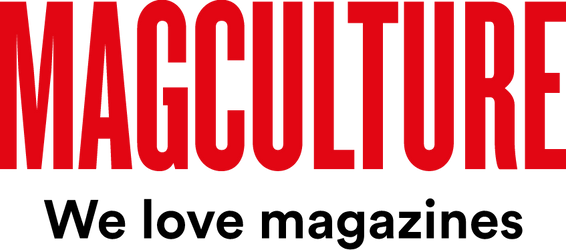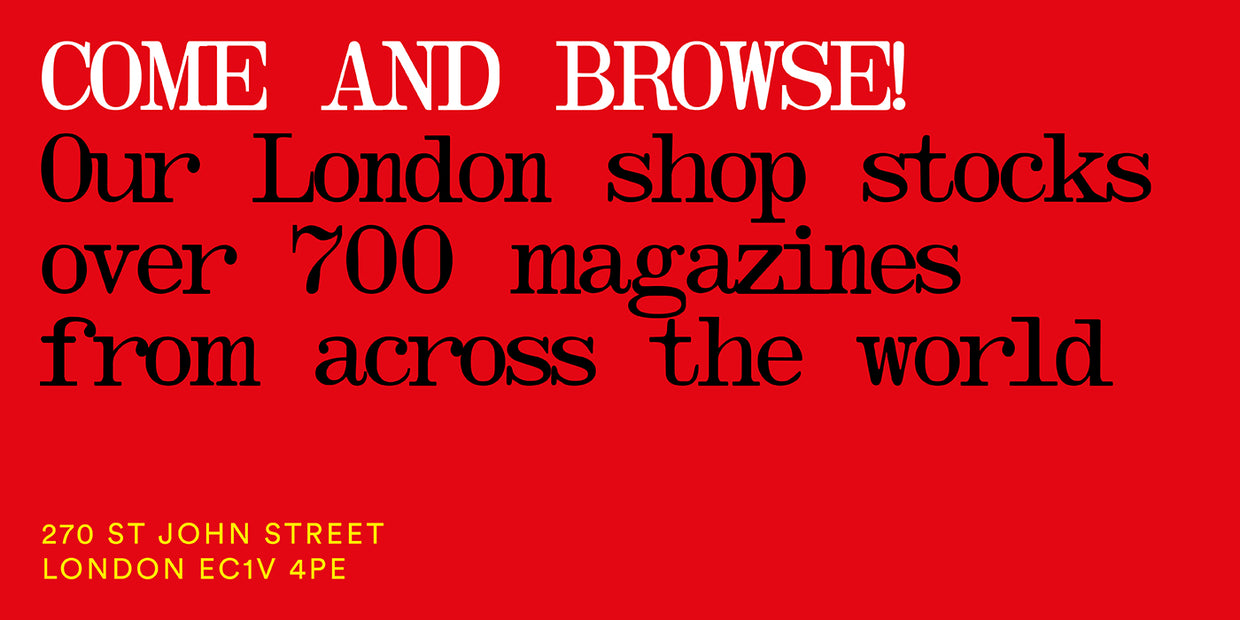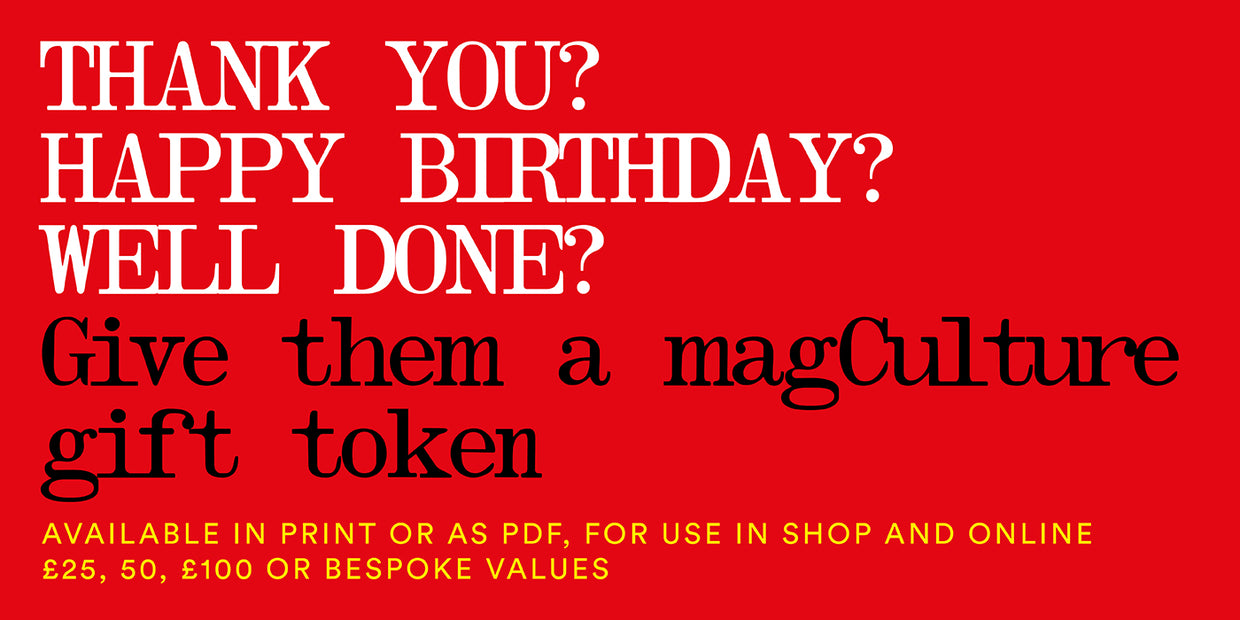

Alex Hunting, Footnote
Alex Hunting Studio is an award-winning London creative agency with a host of magazine projects to its name, including Kinfolk, Kindling, Courier and Brownbook. Founder Alex Hunting has now launched his own magazine.
The title ‘Footnote’ gives a sense of the new magazine, ‘The concept is simple and hasn’t changed much since the start,’ Hunting tells us,‘each issue, we commission a writer to create a piece of fiction, then invite photographers, writers, poets, and others to respond to a word, phrase, or idea from the text.’ The result is a complex patchwork of creative work, all linked back to that starting text,and held together by a strong sense of graphic identity.
What are you doing this Monday morning?
I’m up pretty early most days thanks to my four-year-old son, so I try to make the most of the early start. I drop him off at nursery in Stoke Newington, then catch the Overground to my studio in Bethnal Green. I usually tryyyyy to hit the gym before work on Mondays (Sunday hangover permitting), so I’ll jump off the train at London Fields and squeeze in a workout. Thankfully I achieved this today.

Once I get to work, I grab a coffee (there’s a great café in my studio building) and spend the first hour or two (or ten) tackling the ridiculous mountain of emails we all seem to face these days. I run my own design practice, primarily working on visual identity and editorial projects. My mornings typically involve catching up with any team members working on current client briefs, setting them up for the day, and then diving into my own to-do list.
Describe your work environment
I have an office in Bethnal Green, East London, with a third-floor view overlooking the Overground line (nice, right?). It’s a peaceful space—apart from the constant incessant sound of trains.

It was actually nice and tidy until I received a couple of pallets of Footnote (above). The magazine is being distributed to retailers by Antenne Books, but we’re handling pre-orders ourselves, and I hadn’t anticipated how labor-intensive it would be lugging copies back and forth to the post office. Turns out magazines take up a lot of space.
Right now, I’m listening to a very chilled Spotify playlist curated by my friend Mat, intriguingly titled Late Night Top Button Opener.

Which magazine do you first remember?
Probably The Funday Times, a kids’ supplement that came with The Sunday Times. I loved it so much and vividly remember waiting eagerly for the Sunday papers each week. In hindsight, it was an early version of what The New York Times is now doing so well with New York Times for Kids.

The other magazines that were huge for me growing up were skateboarding magazines. From about the age of ten, I was completely obsessed with skateboarding. Thrasher (from the U.S.) was incredible, as was the cult British mag Sidewalk Surfer. I would absolutely love to design a skateboarding magazine one day.

Aside from yours, what’s your favourite magazine?
At the moment, The Fence. I love it. It’s packed with superb writing, it’s very funny, and the format suits the content perfectly. Studio Mathias Clottu has done such a great job with the art direction, combining elegant and functional typography with playful, loose, two-colour illustrations. The balance is so satisfying

Describe Footnote in three words.
Can I use five words? Its tagline is ‘A Journal for Artistic Exchange.’ That sums it up perfectly.

I came up with the idea for Footnote a couple of years ago, but between client projects and life stuff, it took a while to make it happen. About 18 months ago, I reached out to George Upton to see if he’d collaborate on it. He’s a fantastic editor, and we’d worked together on editorial projects before, so I knew he’d be perfect for this.

The concept is simple and hasn’t changed much since the start: each issue, we commission a writer to create a piece of fiction, then invite photographers, writers, poets, and others to respond to a word, phrase, or idea from the text. The magazine is essentially a collection of literary and visual ‘footnotes’ to the original story.
The hardest part was deciding who should write the main piece for the first issue. We wanted something visually rich that could spark amazing responses.

The process has been completely different from other magazines I’ve worked on because you don’t really know how it’s going to look until the very end. Once the contributors pick their passages and finish their pieces, that’s when the design kicks off. Although I chatted with some contributors about their briefs, the best part has been how personal and unfiltered their responses are.

We had the most amazing and varied contributions—from writers like Eley Williams, Pemi Aguda, Brian Dillon, and Kevin Brazil, to visual stories by Jack Davison, Sarah Blais, Joe Cruz, Mattia Balsamini, Daniel Benson, and many more. The magazine’s role is simply to bring all these talented people together and showcase their unique interpretations.
Did you assign specific parts of the text to the various contributors, or were they encouraged to find their own starting points in A. K. Blakemore’s text?
No, the artists were encouraged to choose their own passages. I selected contributors I thought would resonate with the piece, but it was always intended as a space for them to create something special and personal.
Has it felt strange returning to the usual designer-client process, since?
A bit, yes. I’m currently working on two new magazines—one focused on business and entrepreneurship, and another that’s a lifestyle title. To be honest, it’s nice to have a clearly defined brief again.
When you’re working for a client, there’s a dialogue and a tension—iterating versions back and forth. While it can be sometimes be frustrating if you disagree with feedback, that process often leads to fantastic results. Constraints and collaboration really do push you to find decent solutions... (most of the time)
With Footnote, the freedom to do anything was liberating but also tricky. That blank-canvas syndrome can be overwhelming. That said, I’m excited to evolve the design and respond to the themes of the central text in future issues.

Show us one spread that sums up how the magazine works and gives a sense of what the reader can expect from it.
Here you can see the central text on one side and the footnotes highlighted on the left. The rest of the magazine is a collection of these footnotes—a mix of writing, art, and photo stories.
What advice do you have for anyone planning to launch a magazine?
Work with people you admire, and have fun with it. George and I had lots of fun over long lunches brainstorming possible contributors. It’s incredibly satisfying to see something come together, so enjoy the process.
On a practical note: if you’re fulfilling your own orders (or pre-orders), link your Shopify account with Royal Mail’s Click & Drop service. It automates your postage and address labels, saving a ton of time.
What are you most looking forward to this coming week?
Getting another client magazine off to print and out the door at long last… and, on a lighter note, taking my little one to London Zoo on Saturday. He’s pumped!
Buy your copy from the magCulture Shop



